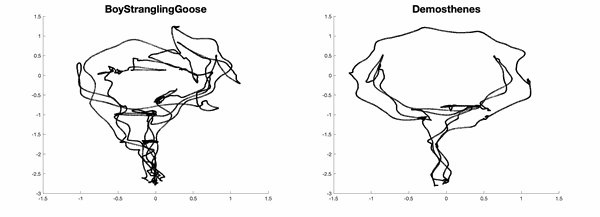Archaeology meets Psychology
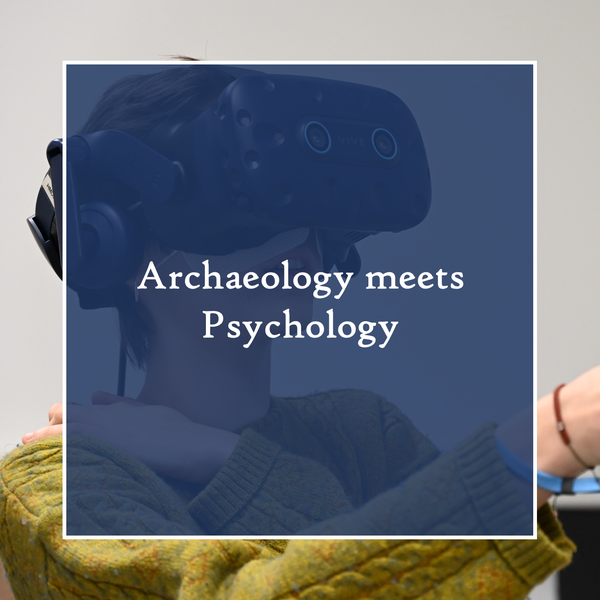 |
Digital and immersive technologies have played a central role in research and knowledge transfer for several years. Since 2018, the Department of Classical Archaeology at JLU Giessen has been actively exploring the use of digital interaction technologies in museum contexts and teaching. The department is now expanding into new research areas. In collaboration with the Department of Experimental Psychology, we are investigating perception structures through eye-tracking in a virtual reality experiment using 3D models of ancient sculptures.
|
||
|
In the scientific study of images, it can be insightful to explore how viewers perceive and react to representations for a deeper understanding. This poses a particular challenge for classical archaeological research, which is centrally concerned with the visual culture of Greek and Roman antiquity, as contemporary ancient viewers can no longer be observed or questioned. In a collaborative project between Classical Archaeology and the Perception & Action team of the Psychology Department at JLU, we are currently investigating how Classical Archaeology can adopt modern perception research methods to enhance our understanding of how people in antiquity perceived their statues and, consequently, their world. The project focuses on sculpture from a period of significant change in pictorial composition: the Hellenistic period, in the 3rd century BC. This era witnessed not only the emergence of a new order in the ancient Mediterranean world due to Alexander the Great's conquests but also a shift in people's perspectives on this world. Evidence from three-dimensional large-scale sculptures of this time suggests that viewers no longer perceived sculptures from a fixed viewpoint; instead, they moved dynamically around statues such as the so-called Gaul Ludovisi, synthesizing various perspectives to form an overall impression. The concept of multiple viewpoints represented a departure from the compositional principles of sculpture that were prevalent before and after the 3rd century BC. Prior to this period, sculptures were designed to be fully comprehensible from a single viewpoint, encouraging a static form of viewing characterized by distance and reflection. In contrast, the sculptures of the 3rd century BC seem to have invited a more immersive experience. The project aims to investigate how modern viewers interact with these multi-viewpoint statues compared to their engagement with single-viewpoint statues. It seeks to identify specific movement and viewing patterns associated with each type of composition. Additionally, the project examines whether the multi-perspective nature of 3rd-century BC statues arises from 'tipping points' in their composition—specific points on a statue that prompt viewers to move forward or backward. The underlying hypothesis posits that if distinct movement and viewing patterns can be established for different compositions, similar patterns can be inferred for ancient viewers. Moreover, the study of ancient sculpture provides an intriguing subject for modern perception research, offering insights into how individuals interact with complex objects in space and how immersive technologies influence human perception structures. |
|||
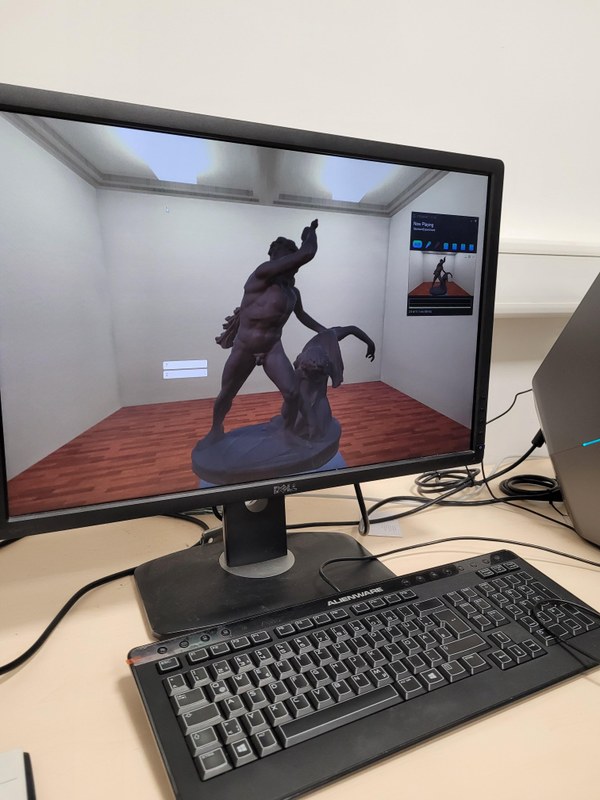 |
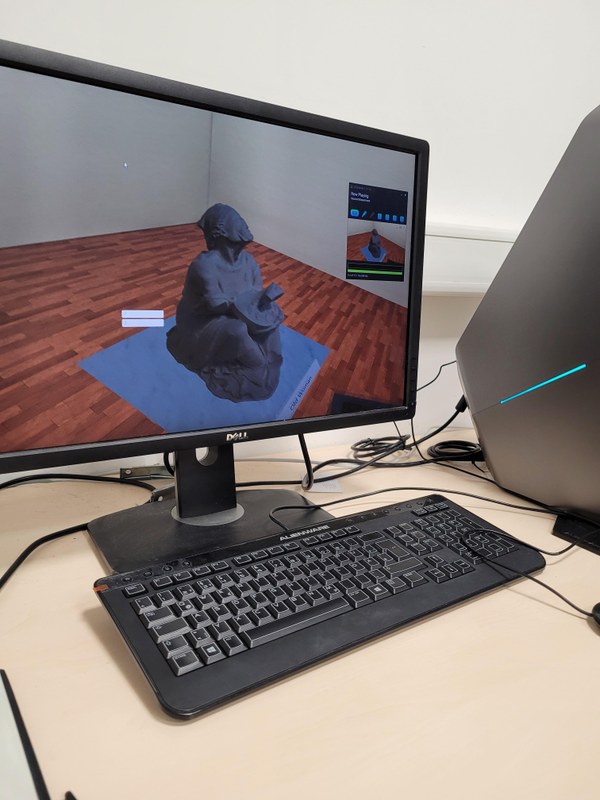 |
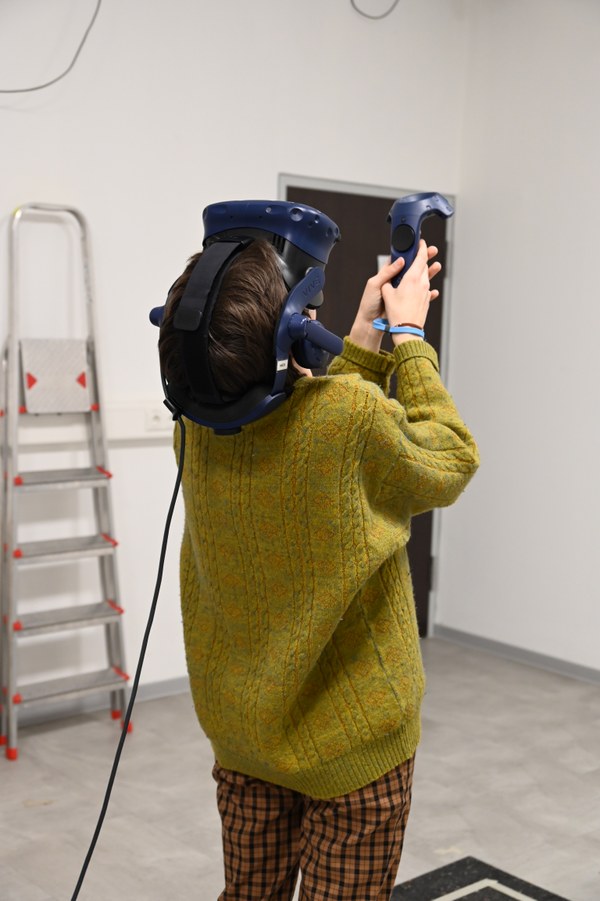 |
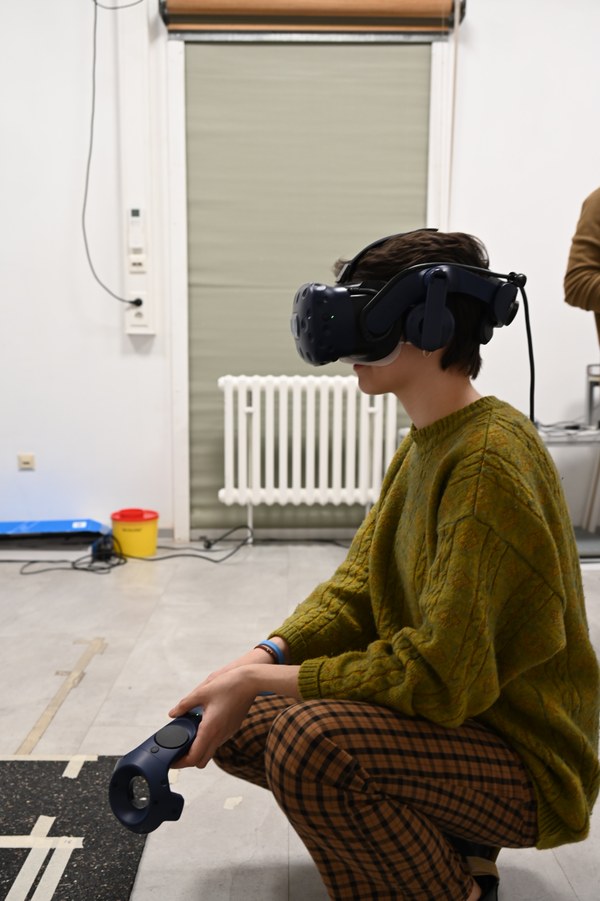 |
|
For this investigation, an experiment was designed within a virtual reality (VR) environment, where participants observed and moved around 12 statues of different types—either single-viewpoint or multi-viewpoint. Their spatial movements and eye dwell times were recorded using eye-tracking technology to identify prioritized views and potential 'tipping points' in the composition. The results were validated by comparing the datasets with photographs of the preferred views of the sculptures, which the participants captured in VR during a subsequent phase of the experiment. This experimental setup allowed for the analysis of participants' behavior in an environment they perceived as natural while maintaining control over the environment and tasks, thus avoiding the influence of a laboratory setting that might deviate significantly from reality and impose excessive constraints. The evaluation of the datasets from an initial test group of just three participants has already revealed clear differences in the perception of single-viewpoint and multi-viewpoint large-scale sculptures, not only in terms of spatial movement but also in the time spent viewing different sides of the statues. The visualization of superimposed participant movements reveals distinct patterns of engagement with both types of statues. While participants tended to focus on the front side of single-viewpoint statues, their interaction with multi-viewpoint statues involved more pronounced spatial movement patterns and increased interest in different views, driven by intensive exploration and extended viewing times. Further analysis of the ongoing tests is pending, but preliminary results indicate that the effects of different composition types can be clearly distinguished and meaningfully interpreted in terms of cultural history. Moreover, the experiment provided valuable insights that align with the Department of Classical Archaeology's work and will be more comprehensively integrated into future teaching at JLU. The use of 3D models of ancient artifacts and sites has long been employed to enhance immersive and intensive learning experiences, blending objective and subjective approaches. In this experiment, students of Classical Archaeology demonstrated significantly greater engagement when viewing statues in the VR environment compared to traditional two-dimensional photography, which is customary in their studies. Given the centrality of image analysis in classical archaeological work, technologies that enhance intrinsic motivation must play a central role in training future generations of scholars.
Contact: Prof. Dr. Katharina Lorenz and Dr. Claudia Schmieder |
|||

